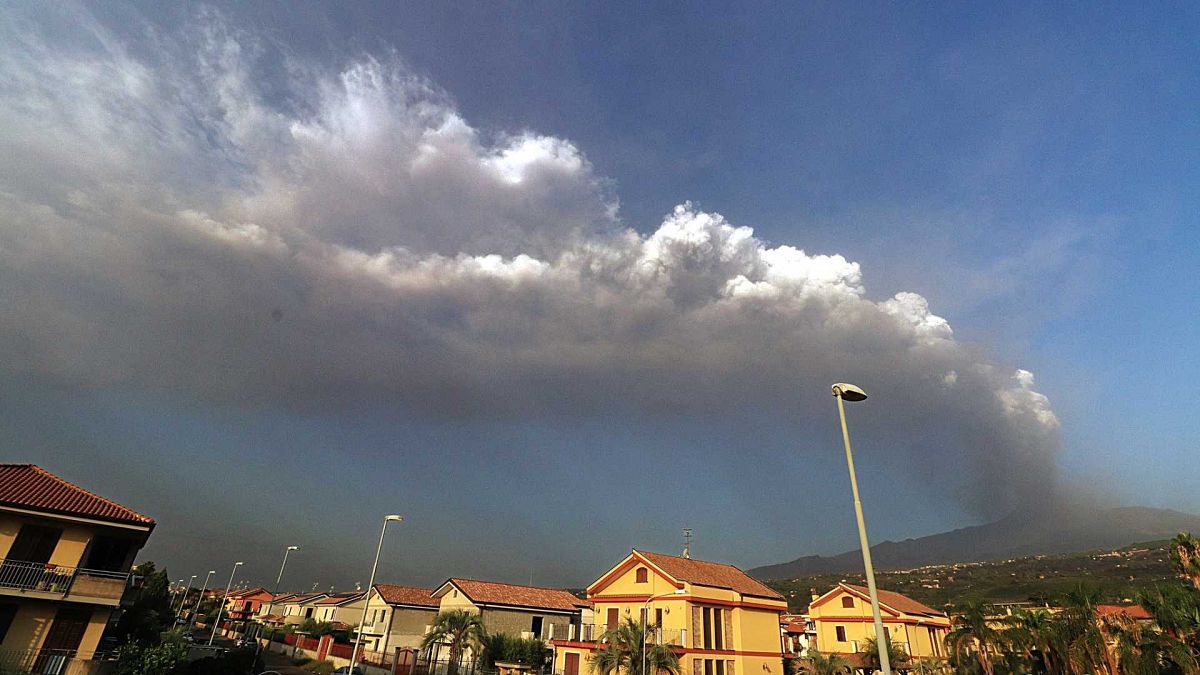On Italy’s busy Ferragosto holiday, all flights were cancelled or diverted to other airports in Sicily.
Due to a volcanic eruption during the night, travel to and from the Italian island of Sicily is currently affected.
Catania International Airport will remain closed on Thursday, August 15. All arrivals and departures are suspended after Etna spewed smoke into the air. The volcanic ash is affecting visibility for pilots.
It is estimated that operations will resume around 6:00 p.m., but passengers are advised to check the status of their flight before departure.
The disruption comes on one of Italy’s busiest days as it celebrates its biggest national holiday. Sunday.
Nearby towns were also covered in black volcanic ash after the Voragine crater erupted last night. A previous eruption occurred two weeks ago on August 4.
Catania is located on the east coast of Sicily and at the foot of Mount Etna, the most active volcano in Europe.
Catania Airport: What is advised to passengers?
Airport management has advised passengers to check the status of their flight with their airline before departure.
For the most up-to-date information, please check the airlines’ apps or websites, as well as their social media channels. Also, pay attention to the email address you used to make the booking, as your airline or booking platform may contact you to inform you of any changes.
Although no official figures have been released, the airport’s departure boards show cancellations for all flights arriving or departing before 6 p.m., as well as unspecified delays for flights scheduled for 6 p.m. or later.
Currently only a few arrivals are being diverted to other airports in Sicily – read on for more information.
Catania is Sicily’s most popular airport for international tourists and is at the height of the summer season.
Check your flight status here.
Are flights to Catania being diverted and are transfers possible?
Some arrivals and departures will be diverted to Comiso and Palermo airports.
Don’t forget that Sicily is the largest island in the Mediterranean. It is twice the size of Cyprus, which is a separate country, and the journey from Palermo in the northwest to Catania in the east takes about three hours.
Comiso Airport is one to two hours’ drive from Catania Airport, both located in the east of the island.
There are car rental companies at Sicily’s airports and buses also run between the larger cities.
Currently, diversions to Palermo include selected Ryanair flights from Budapest, Brussels, Cagliari, Rome and London, while one Aeroitalia flight from Rome has been diverted to Comiso.
The status of some arrivals still needs to be updated by the transport companies.
During previous travel disruptions, airports or airlines have organized free buses to take passengers to their scheduled arrival or departure airport. You may not receive information about these free transfers until you arrive at the airport.
Are passengers entitled to compensation?
In the event of a cancellation or delay of more than three hours, airlines are obliged to offer you an alternative flight or a refund.
However, this only applies if they could have prevented the disruption. In the case of a volcanic eruption, it is not their fault.
In most cases, however, airlines continue to strive to get passengers to their final destination.
It is always advisable Travel insurance as you may be able to claim back unexpected expenses.
Is it safe to travel to Sicily?
Yes, it is still safe to travel to Sicily even if Mount Etna erupts.
There is a Persistent drought in SicilyHowever, most hotels and other tourist accommodations are open and operating as usual.
Travelers should take the usual precautions in hot weather: drink plenty of water, stay in the shade during the hottest hours of the day, and seek medical attention if you feel unwell.
Where is Mount Etna and is it dangerous?
Mount Etna is located on the east coast of the Italian island of Sicily.
It is the most active volcano in Europe and has been in a particularly active phase over the last five years.
Although Etna Although eruptions occur frequently, lava has not reached surrounding towns since the 19th century.
Etna has more than 200 craters and when one of them erupts, black volcanic ash lands in the city of Catania at the foot of the volcano and in many surrounding towns and villages. This is inconvenient for local residents but usually not a problem for visitors.
Even during an eruption, many hiking trails and paths are still safe. However, it is a legal requirement to go up accompanied by a qualified, local mountain guide.

